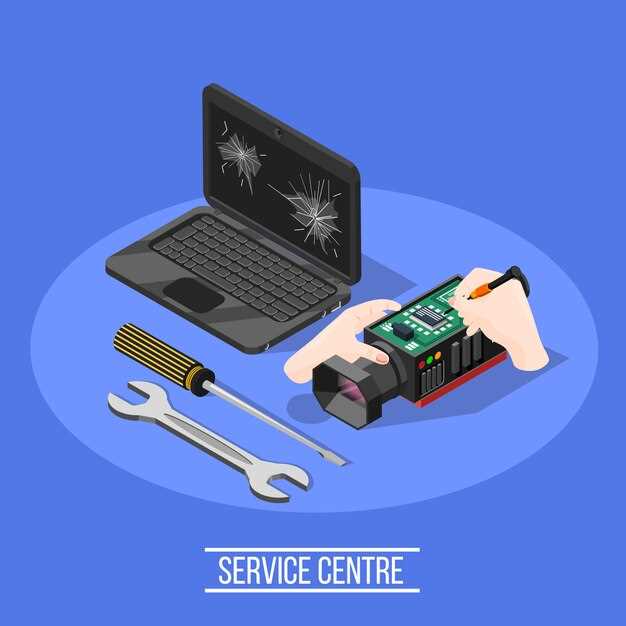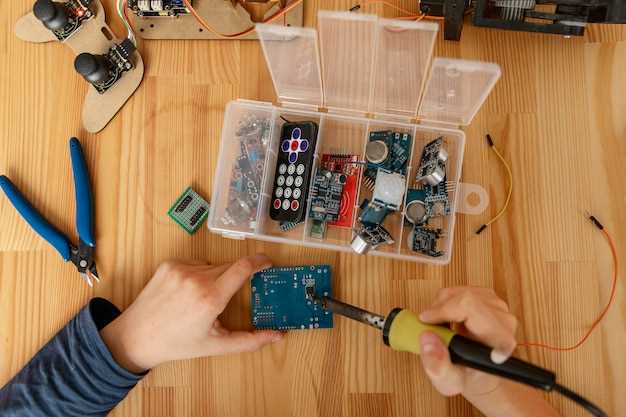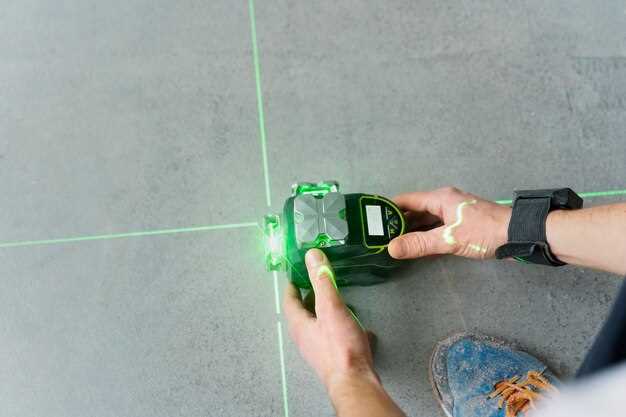
In the realms of manufacturing and technology, maintaining the accuracy of sensors is paramount. Sensors play a crucial role in monitoring environmental conditions, measuring variables, and ensuring various systems operate within specified parameters. However, when these sensors undergo repairs, whether due to damage or maintenance, recalibration becomes essential to restore their accuracy and functionality.
Recalibrating sensors after manufacturing repairs involves adjusting their output to align with established standards and specifications. This process mitigates the risks associated with erroneous readings, which could lead to unforeseen operational failures. Proper calibration ensures that the sensor reflects true measurements, enabling systems to function optimally and safely.
The importance of recalibration cannot be overstated, especially in critical applications such as aerospace, healthcare, and industrial automation. Even slight deviations from calibrated sensor performance can result in significant consequences, making it imperative for manufacturers and operators to implement stringent recalibration protocols post-repair.
Understanding Sensor Calibration Requirements

Calibration is an essential process that ensures sensors provide accurate and reliable measurements. After manufacturing repairs or modifications, it is crucial to understand the specific calibration requirements for each sensor type.
Key factors influencing sensor calibration include:
- Type of Sensor: Different sensors operate using various principles, requiring unique calibration methods.
- Environmental Conditions: Temperature, humidity, and pressure can affect sensor performance and must be considered during calibration.
- Application Requirements: The intended use of the sensor dictates the accuracy levels needed, influencing the calibration process.
- Data Accuracy: Sensors should be reset and calibrated to match industry standards for precision based on their application.
After repair, a sensor often needs to be reset to clear any previous calibration settings. This reset establishes a baseline for accurate measurement during the new calibration process. The following steps outline a general approach to recalibrating sensors:
- Reset the Sensor: Ensure all previous settings and calibrations are cleared.
- Prepare Calibration Standards: Use certified standards that meet the sensor’s operational requirements.
- Perform Calibration: Follow manufacturer guidelines to adjust the sensor output to align with the calibration standards.
- Document Results: Record calibration data to ensure traceability and compliance with regulations.
- Verify Calibration: Test the sensor post-calibration to confirm accuracy.
Regular calibration and maintenance of sensors not only improve their longevity but also ensure the reliability of the data they produce in critical applications. Understanding these requirements is crucial for any organization that relies on sensor technologies to operate effectively.
Step-by-Step Guide for Sensor Reset Procedures
Resetting sensors after manufacturing repairs is essential to ensure their accuracy and reliability. Follow these steps to properly reset your sensor and restore its optimal functioning.
Step 1: Power Off the Sensor
Before beginning the reset process, safely power off the sensor. This prevents any potential electrical damage and ensures safety during the procedure.
Step 2: Locate the Reset Button
Find the reset button, which is typically located on the sensor’s main body or circuit board. Consult the manufacturer’s manual for the exact location and specifications.
Step 3: Press the Reset Button
Using a non-conductive tool, press and hold the reset button for a predetermined duration, usually around 5-10 seconds. This action clears any existing calibration and prepares the sensor for reconfiguration.
Step 4: Power On the Sensor
After the reset, power on the sensor again. Wait for it to initialize completely, which may take several moments, depending on the model.
Step 5: Perform Calibration
Once the sensor is powered on, conduct a calibration process to ensure its accuracy. Follow the calibration instructions provided in the manufacturer’s guidelines, which usually involve exposing the sensor to known reference points or values.
Step 6: Verify Functionality
After calibration, verify that the sensor is functioning correctly by testing it against known metrics. Check the readings to ensure they align with expected values, confirming that the reset was successful.
Step 7: Document the Procedure
Record the reset and calibration process in your maintenance log. Documentation is crucial for tracking the sensor’s performance over time and ensuring compliance with industry standards.
By following these steps, you can effectively reset your sensor after manufacturing repairs, ensuring its accuracy and extending its lifespan.
Tools and Equipment Needed for Accurate Calibration
Accurate calibration of sensors after manufacturing repairs is crucial to ensure their reliable performance. To achieve precise results, a variety of tools and equipment are essential.
First and foremost, a high-precision calibration source is necessary. This device provides the reference signals required to adjust the sensor’s output. Common sources include signal generators and calibrated voltage or current supplies. These tools help in setting a baseline for the sensor’s performance.
Calibration software also plays a vital role in the recalibration process. This software interfaces with the sensor and the calibration equipment, allowing for real-time adjustments and data logging. It often includes features for analysis and reporting, which aid in verifying that the sensor meets required specifications post-repair.
A multimeter is another indispensable tool. It measures various parameters such as voltage, current, and resistance, allowing technicians to confirm that the sensor’s reset values align with established standards. High-end multimeters offer automated calibration functions, simplifying the process.
Environmental chambers may be necessary for calibrating temperature-sensitive sensors. They provide controlled conditions to evaluate sensor performance under different environmental factors. This is particularly important for sensors that must operate accurately in varying conditions.
Additionally, fixtures or mounts specific to the sensors play an essential role in ensuring that measurements are taken consistently. These fixtures hold the sensor in place and align it correctly with calibration sources, minimizing errors during the calibration process.
Finally, a record-keeping system is important for tracking calibration history. Documentation of each recalibration session, including date, procedures followed, and outcomes, is essential for quality control and compliance with industry standards.
In summary, the combination of calibration sources, software, multimeters, environmental chambers, fixtures, and thorough documentation form the foundation for achieving accurate sensor calibration following manufacturing repairs.
Common Challenges in Sensor Recalibration

Recalibrating sensors after manufacturing repairs is a critical process that ensures accurate and reliable performance. However, this process often encounters several challenges that can hinder the overall effectiveness of the recalibration efforts. Understanding these challenges is essential for improving accuracy and maintaining sensor integrity.
One of the primary challenges is the variability in environmental conditions. Sensors can be sensitive to temperature, humidity, and pressure changes, which may not be replicated during the recalibration process. This discrepancy can lead to inaccurate recalibration results, affecting the sensor’s performance in real-world applications.
Another challenge is the complexity of the calibration process itself. Different types of sensors require specific calibration techniques and equipment. Failure to use the correct methods can result in improper adjustments that compromise the sensor’s accuracy. Additionally, outdated calibration protocols can further complicate the recalibration process.
Furthermore, the wear and tear of sensor components during manufacturing repairs can affect recalibration accuracy. Components may not return to their original specifications, leading to inconsistencies in sensor readings. Identifying and addressing these deficiencies is crucial for achieving reliable recalibration outcomes.
Finally, human error plays a significant role in the recalibration process. Technicians must accurately execute complex procedures, and even minor mistakes can lead to significant deviations in sensor accuracy. Comprehensive training and adherence to best practices are necessary to minimize these risks.
| Challenge | Description |
|---|---|
| Environmental Variability | Changes in temperature, humidity, and pressure affecting recalibration. |
| Complexity of Calibration | Different sensors require specific techniques; incorrect methods can compromise accuracy. |
| Component Wear and Tear | Repairs may lead to deviations from original specifications, affecting readings. |
| Human Error | Minor mistakes in procedure execution can lead to significant accuracy issues. |
Best Practices for Maintaining Sensor Accuracy
Maintaining sensor accuracy is crucial for ensuring the reliability of measurements and functionality of various systems. Implementing best practices can significantly enhance the performance and lifespan of sensors. Here are some essential guidelines:
Regular Calibration: Conduct regular calibration of sensors according to the manufacturer’s recommendations. This process helps to adjust the sensor output and improve measurement precision. Calibrating before and after critical operations can identify deviations and ensure accurate readings.
Environmental Control: Sensors should be protected from extreme temperatures, humidity, and corrosive environments. Utilize enclosures or climate-controlled settings to mitigate external factors that could impact sensor readings and accuracy over time.
Routine Maintenance: Establish a maintenance schedule that includes cleaning and inspecting sensors. Dust, dirt, and other contaminants can interfere with sensor function, leading to inaccurate data. Regular cleaning can help sustain accuracy and prolong operational life.
Data Validation: Implement rigorous data validation processes to cross-check sensor readings against reliable benchmarks or alternative sensors. This practice can quickly identify discrepancies and allow for corrective actions to maintain accuracy.
Training Personnel: Ensure that personnel responsible for sensor management are well trained in operating and maintaining the equipment. Proper knowledge can minimize user errors and promote adherence to best practices for accuracy.
Monitor for Drift: Be vigilant for sensor drift, which occurs when a sensor’s output gradually changes over time. Setting up monitoring systems can alert operators to any significant shifts in performance, prompting timely recalibration or replacement.
By following these best practices, organizations can greatly enhance sensor accuracy, ensuring optimal performance and reliability in their applications.
Case Studies: Successful Sensor Recalibration Techniques
In the realm of sensor technology, recalibration is paramount to ensuring accuracy after repairs. Various industries have implemented innovative techniques to achieve optimal performance. This section discusses several case studies highlighting effective sensor recalibration methodologies.
One notable case involved an aerospace company that faced challenges with pressure sensors after maintenance interventions. The team employed a systematic reset protocol that included a multi-point calibration across the sensor’s operating range. This technique ensured that the sensors not only returned to their factory settings but also remained accurate under varied environmental conditions, ultimately leading to a 20% increase in measurement reliability.
Another successful example comes from the automotive sector, where a leading manufacturer revamped its approach to recalibrating temperature sensors post-repair. By leveraging a combination of software algorithms and real-time data analysis, the engineers developed an adaptive recalibration technique. This method enabled the sensors to continuously reset and adjust their readings based on feedback loops, driving down error rates significantly and enhancing overall vehicle performance.
In a healthcare setting, a medical device firm faced recurrent issues with glucose sensors. After rigorous analysis, they implemented a dual-factor recalibration strategy, involving both manual resets and automated adjustments based on historical data patterns. This approach not only improved the accuracy of the readings but also optimized the lifespan of the sensors, ensuring patient safety and device reliability.
Lastly, a notable application in the agricultural sector illustrated how soil moisture sensors could falter after maintenance. By employing a comprehensive field trial and employing a reset mechanism that accounted for varying soil types, the agricultural company achieved recalibrated sensors that significantly enhanced irrigation efficiency. This resulted in a measurable increase in crop yield while simultaneously conserving water resources.
Each of these case studies emphasizes the crucial role of strategic recalibration techniques in restoring sensor functionality and maintaining accuracy after repairs. As industries continue to innovate, the evolution of recalibration methods will be critical in advancing sensor technologies further.
